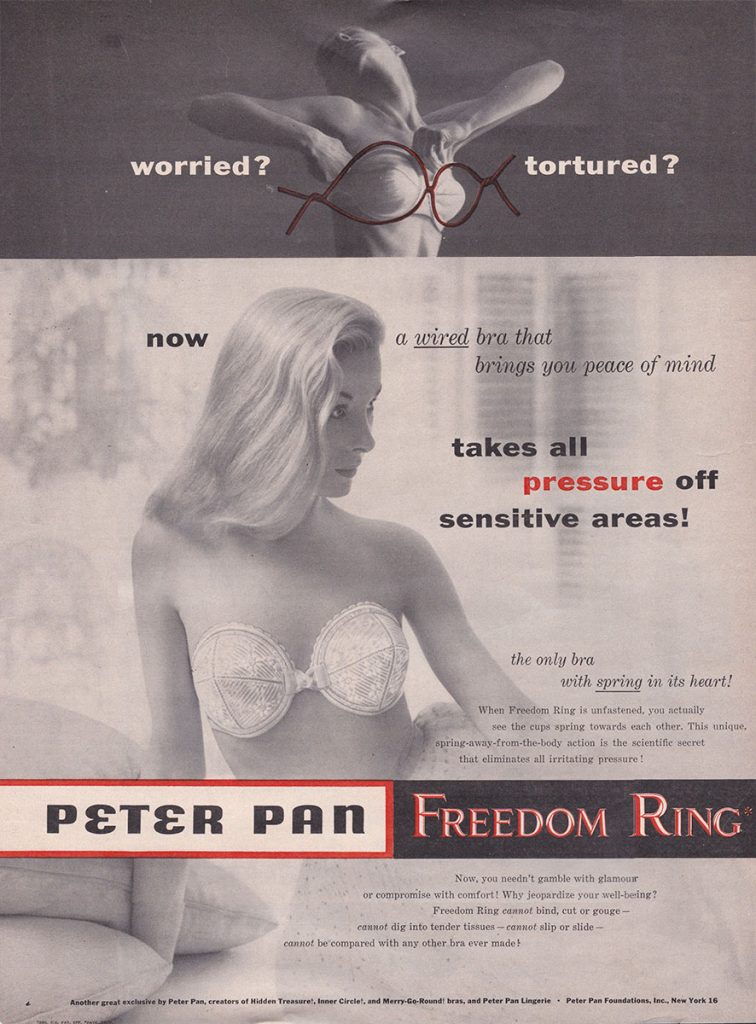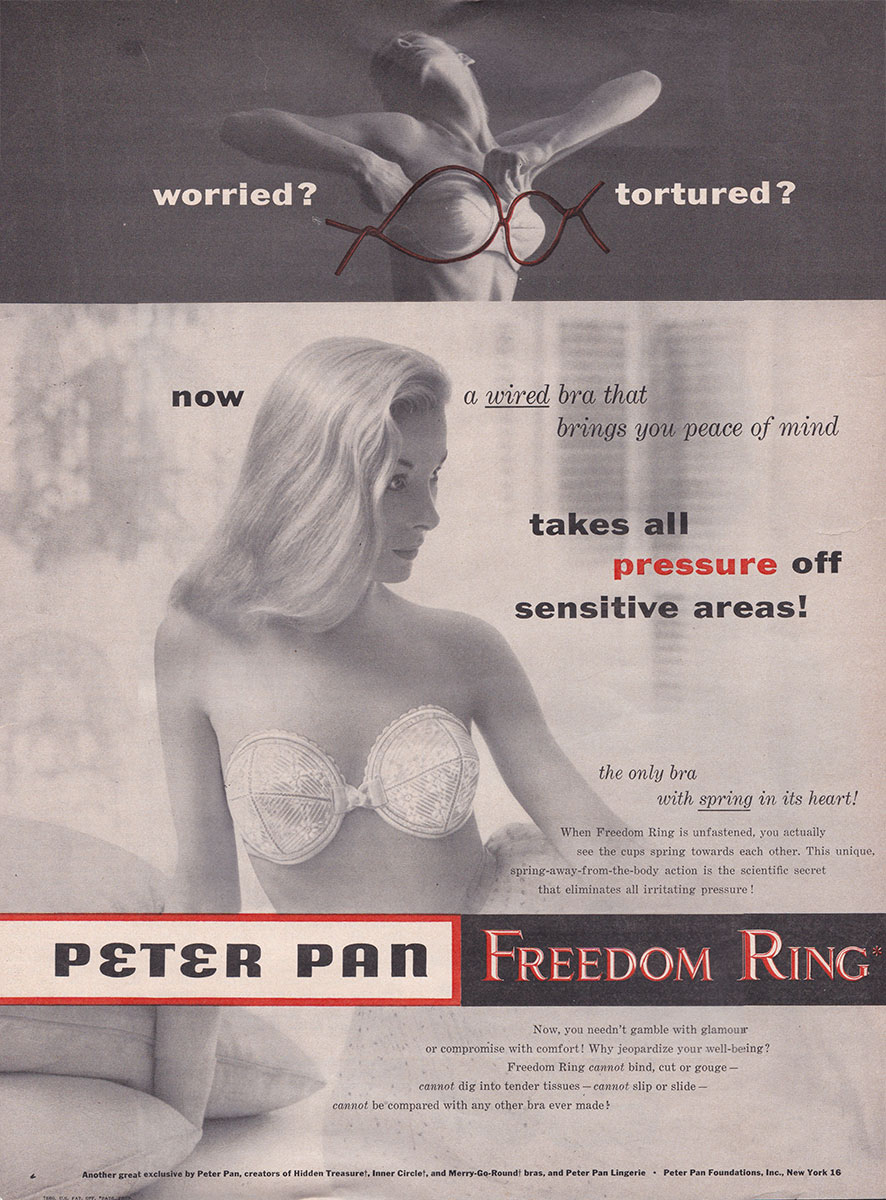Date: c. 1950s
Origin: United States
Brand: Peter Pan
Metal supports have been used in women’s undergarments ever since they replaced the use of whalebone in corsets but, in the twentieth century, bra designers and manufacturers started to come up with increasingly more ingenious ways to use metal. This began before the Second World War, with the first commercially produced style of underwired bra sold in America in 1931 and the first overwired strapless bra in 1934, but wiring only became common after the Second World War due to the limited availability of the metal needed to make the components during the conflict. Early underwired bras could often be extremely uncomfortable and the metal could easily poke out through the fabric after wear, so it became common for the inside of the garment to be padded or covered with velvet where the wires touched the skin in order to improve comfort and reduce the likelihood of the wires escaping.
Henry Plehn launched the Peter Pan line of brassieres in the 1930s, patenting a less rigid method of creating bra cups with stitched support which was reportedly cheaper and less expensive than Hollywood-Maxwell’s famous ‘Whirlpool’. This 1950s advert is for their ‘Freedom Ring’ wired bra, which claims to eliminate the discomfort normally associated with underwired bras through unusual wiring which completely encircles the breasts and does not lie flat. This ‘spring-away-from-the-body action’ is claimed to eliminate pressure and supposedly ‘cannot dig in’.
From the collection of The Underpinnings Museum



